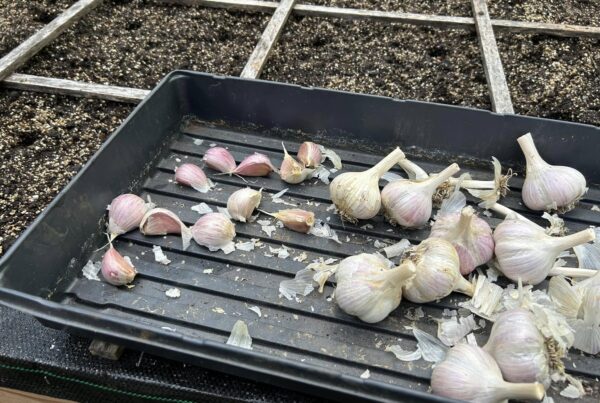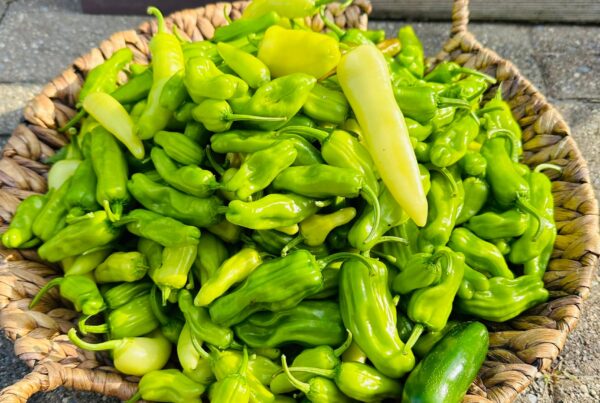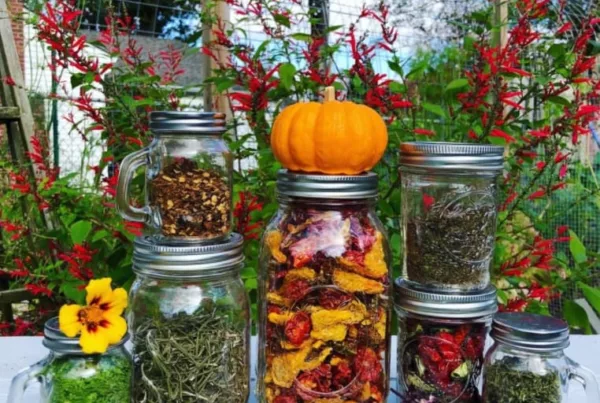Written by Shawna Coronado
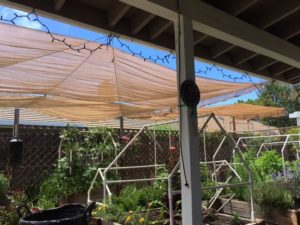 Summer heat can seem devastating to a home garden, which is one of the reasons we suggest using a shade cloth. This simple-to-make and easy-to-use structure can help your plants thrive during extreme sun and heat. Because plants sometimes need to get out of the hot sun and into some cooler shade.
Summer heat can seem devastating to a home garden, which is one of the reasons we suggest using a shade cloth. This simple-to-make and easy-to-use structure can help your plants thrive during extreme sun and heat. Because plants sometimes need to get out of the hot sun and into some cooler shade.
What Is a Shade Cloth and How Does It Boost Garden Production?
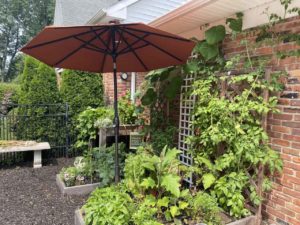 A shade cloth doesn’t have to be complex. You can DIY one with an old sheet, floating row cover, window screen, or a piece of lattice. You can also use a roll of lightly woven material purchased specifically to shade a garden. Whatever kind you use, shade clothes are simple ways to reduce the amount of heat that reaches your plants via sunlight. Shade cloths are used for vegetables, annuals, perennials, shrubs, and even fruit trees in order to reduce the heat zone and protect the plant from sunburn and scald.
A shade cloth doesn’t have to be complex. You can DIY one with an old sheet, floating row cover, window screen, or a piece of lattice. You can also use a roll of lightly woven material purchased specifically to shade a garden. Whatever kind you use, shade clothes are simple ways to reduce the amount of heat that reaches your plants via sunlight. Shade cloths are used for vegetables, annuals, perennials, shrubs, and even fruit trees in order to reduce the heat zone and protect the plant from sunburn and scald.
Research on shade cloths has indicated everything from increased crop yields, improved photosynthesis, reduced risk of plant sunburn (yes, plants to sunburn too), and a longer growing season can be yours when you covering plants properly. Typical photosynthesis occurs when leaves are between 50 to 68 degrees Fahrenheit, with more sunlight equaling better production – until it becomes too hot. Once the thermometer starts to rise over 80 degrees, then fruit production can stall in many vegetables and herbs. Therefore, shading plants during intense heat can boost plant yields.
Quick Tip
Use an umbrella and move it around to shade your SFG as needed throughout the day. We understand some folks may not want to build a shade cloth structure and this is a “quick” solution.
3 Reasons to Use a Shade Cloth in a Home Garden
- Solar Radiation Protection – Shade cloths protect plants from sun radiation. With excessive heat and sun exposure, some plants can suffer leaf curl, browning and scorching. Sometimes it is even beneficial to cover plants in extreme cold to protect from sun scald.
- Pest Protection – Shade cloths protect the garden from severe heat and sun exposure, but depending on the type of cover it can also defend your garden against insect and bird attack. Bonus!
- Soil Moisture – Shade cloths can help plants retain more water. Intense sunlight can be very drying. Shading a garden helps plants retain hydration and helps conserve water and moisture too. Keeping roots cool in general is a smart plan in order to stave off drought and to keep the plant in the cooler photosynthesis production zone.
Types of Shade Cloths That Work Best for Raised Bed Gardens
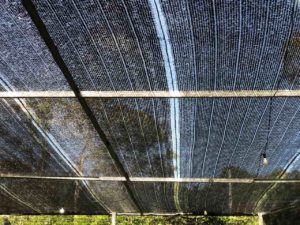
Loose woven shade cloth, ideal for medium shade over SFG or to use in small squares, as shown below.
Shade cloth comes in various colors, different types of material and density levels, which impact how much sunlight the cloth physically blocks. More important than the fabric type is the density level. When you purchase shade cloth, 10% density provides light cover as it blocks only 10% of sunlight. On the other hand, an 80% density cover will block 80% of the sunlight.
Why different densities? Vegetables or herbs that need tons of sun will not grow well under a shade cloth of 90% density – it’s too dark for the plant to flourish. Conversely a plant that is a shade lover like cabbage or chives will fry in full sun in the heat, so it would not survive with only a 10% shade cloth. Select shade cloth covers that help tone down the intense sun without cutting the plant off from its ability to photosynthesize. Typically, this means a shade cloth between 30% to 60%.
Vent and Tent for Optimal Results
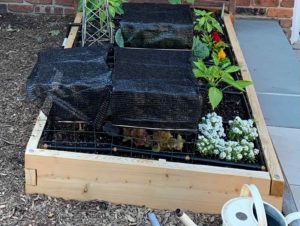
Create tents over specific squares with plants that need more shade.
Finding shade cloth that allows for good ventilation means that plants below it will also stay cooler. Knitted shade cloth, for example, lets more air pass through. Also important: do not lay shade cloth directly on your plants as the weight can break branches and damage the plants. Find supports that lift the shade cloth above the garden to deliver damage-free shade and needed air circulation.
Overall, shade cloth is a critical addition to your Square Foot Garden during peak growing months when the sun is at its hottest. It will extend your plants’ longevity, producing a more bountiful harvest.
Learn more about the Square Foot Gardening Method by taking the introductory course.

